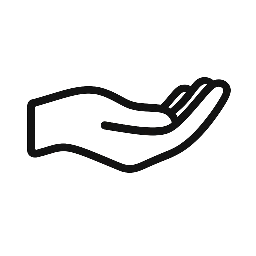
Addiction casts a long, dark shadow that extends far beyond the individual struggling with substance abuse or compulsive behaviors. It’s a pervasive force that infiltrates every corner of a family’s life, transforming dynamics, eroding trust, and leaving a trail of emotional devastation. Often referred to as a “family disease,” addiction doesn’t just affect one person; it creates a complex ripple effect, impacting every member of the family in unique and profoundly challenging ways.
This blog post will delve into the multifaceted ways addiction touches immediate and extended family members, explore the cycle of dysfunction it can perpetuate, and, most importantly, offer pathways to breaking that cycle and finding hope.
Direct Impacts on Immediate Family Members
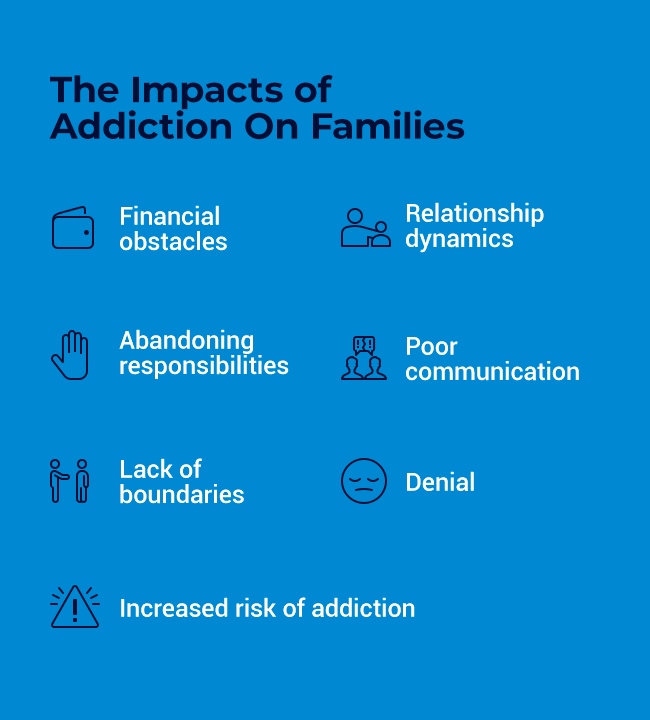
The closest individuals to the person struggling with addiction bear the most immediate and often intense brunt of its effects.
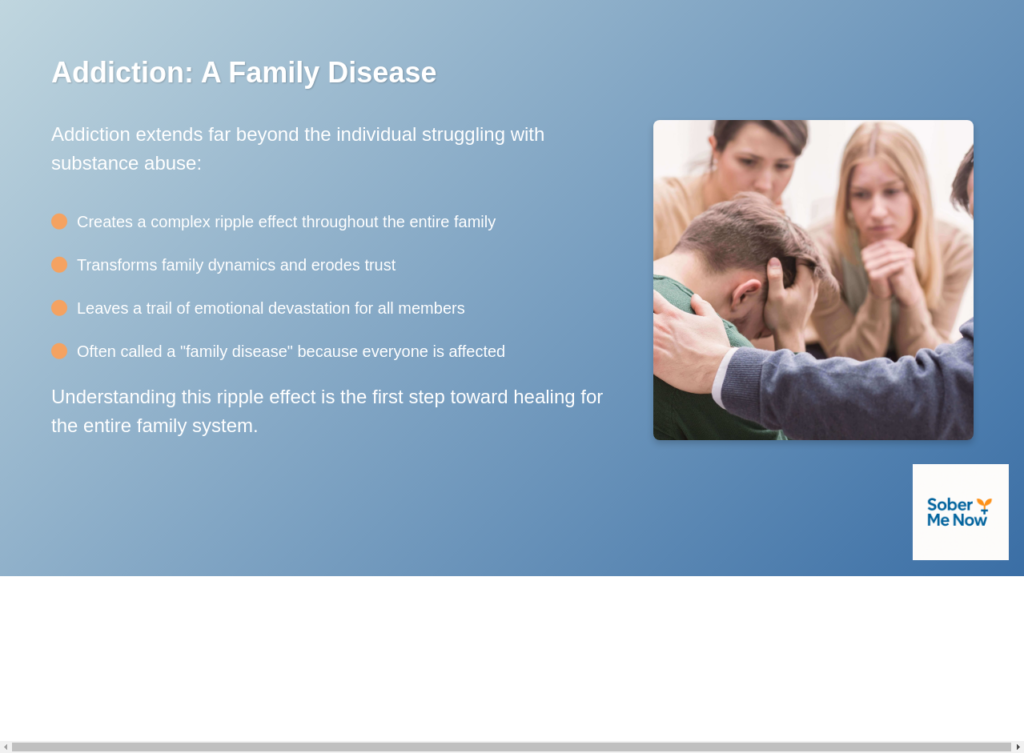
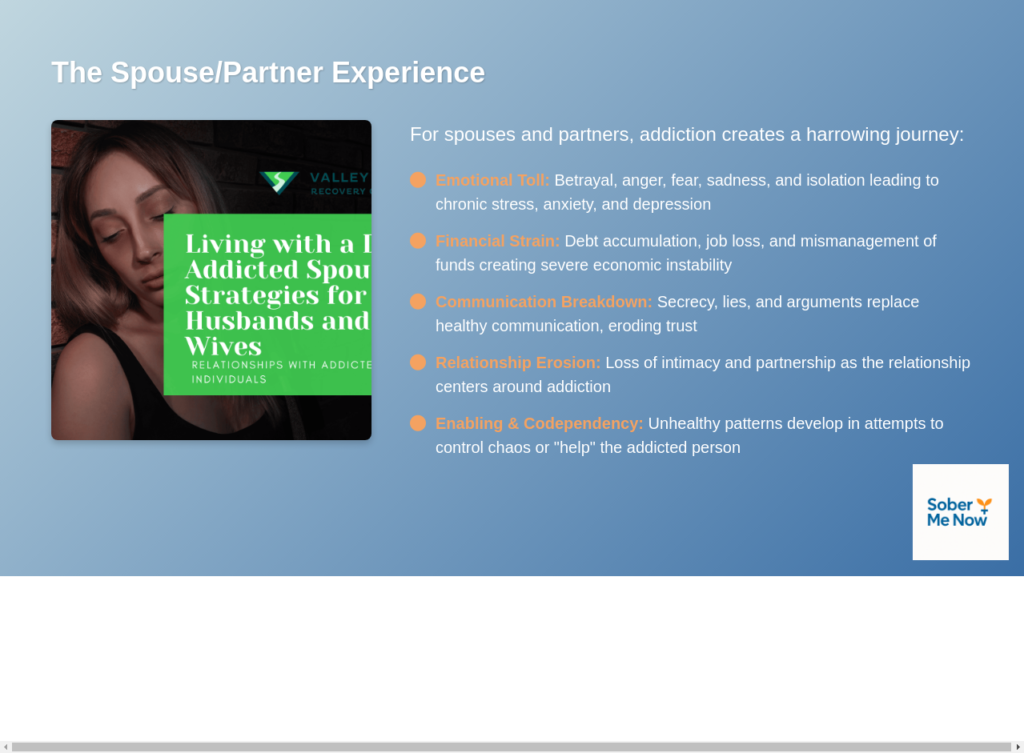
The Spouse/Partner
For spouses or partners, the journey through a loved one’s addiction is often a harrowing one, marked by:
- Emotional Toll: A rollercoaster of emotions becomes the norm. Betrayal, anger, fear, profound sadness, and a crushing sense of isolation are common companions. The constant uncertainty and broken promises can lead to chronic stress, anxiety, and depression.
- Financial Strain: Addiction can decimate a family’s financial stability. Debt accumulates rapidly, job loss for the addicted individual is frequent, and mismanagement of funds becomes a serious issue, often leaving the partner to shoulder an impossible burden.
- Communication Breakdown: Secrecy, lies, and arguments become the dominant modes of communication. Trust, the bedrock of any healthy relationship, erodes, leading to a profound sense of loneliness even when physically together.
- Relationship Erosion: Intimacy suffers greatly, both emotional and physical. The relationship becomes centered around the addiction, leading to a constant state of crisis management rather than partnership. This often culminates in separation or divorce.
- Enabling Behaviors and Codependency: In an attempt to control the chaos or “help” their loved one, partners can inadvertently fall into patterns of enabling (making it easier for the addiction to continue) or codependency (becoming overly reliant on the relationship and the addict’s needs).
Children
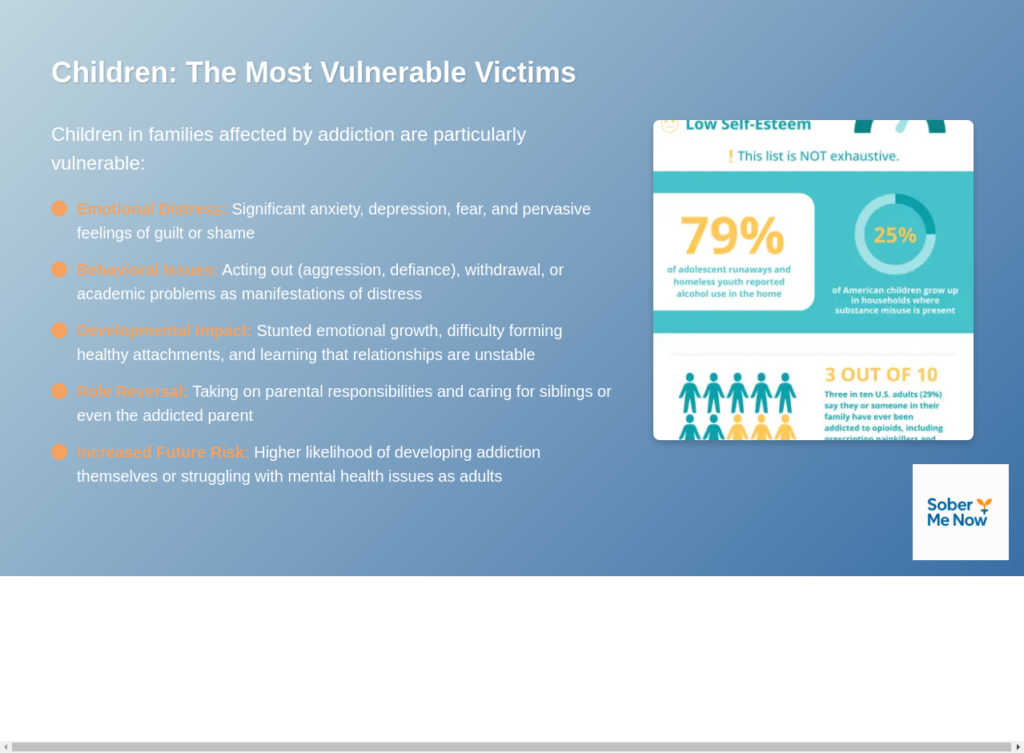
Children in families affected by addiction are particularly vulnerable, their development and well-being profoundly impacted:
- Emotional Distress: They often experience significant anxiety, depression, fear, and pervasive feelings of guilt or shame. They may believe they are somehow responsible for the addiction or the family’s problems.
- Behavioral Issues: This distress can manifest as acting out (aggression, defiance), withdrawal (isolation, silence), or academic problems (difficulty concentrating, truancy).
- Developmental Impact: Their emotional growth can be stunted as they learn to suppress feelings or become hyper-vigilant. They may struggle to form healthy attachments later in life, having learned that relationships are unstable or untrustworthy.
- Role Reversal: Children frequently take on parental responsibilities, caring for younger siblings or even the addicted parent, losing their childhood in the process.
- Increased Risk: Tragically, children from addicted homes are at a significantly higher risk for developing addiction themselves, entering unhealthy relationships, or struggling with mental health issues as adults.
Parents of the Addict
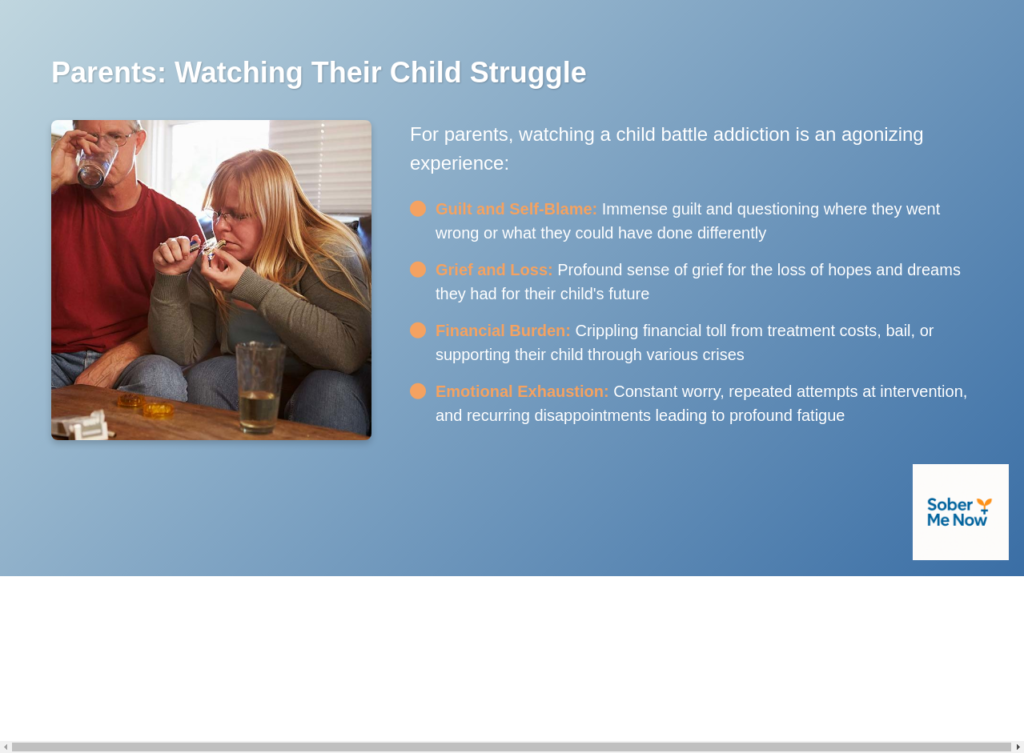
For parents, watching their child battle addiction is an agonizing experience:
- Guilt and Self-Blame: Parents often grapple with immense guilt, questioning where they went wrong or what they could have done differently.
- Grief and Loss: There’s a profound sense of grief – not necessarily for a physical loss, but for the loss of hopes and dreams they had for their child’s future.
- Financial Burden: The financial toll can be crippling, as parents often spend vast sums on treatment, bail, or supporting their child in various crises.
- Exhaustion: The constant worry, attempts at intervention, and repeated disappointments lead to profound emotional and physical exhaustion.
Broader Ripple Effects on the Extended Family and Social Circle
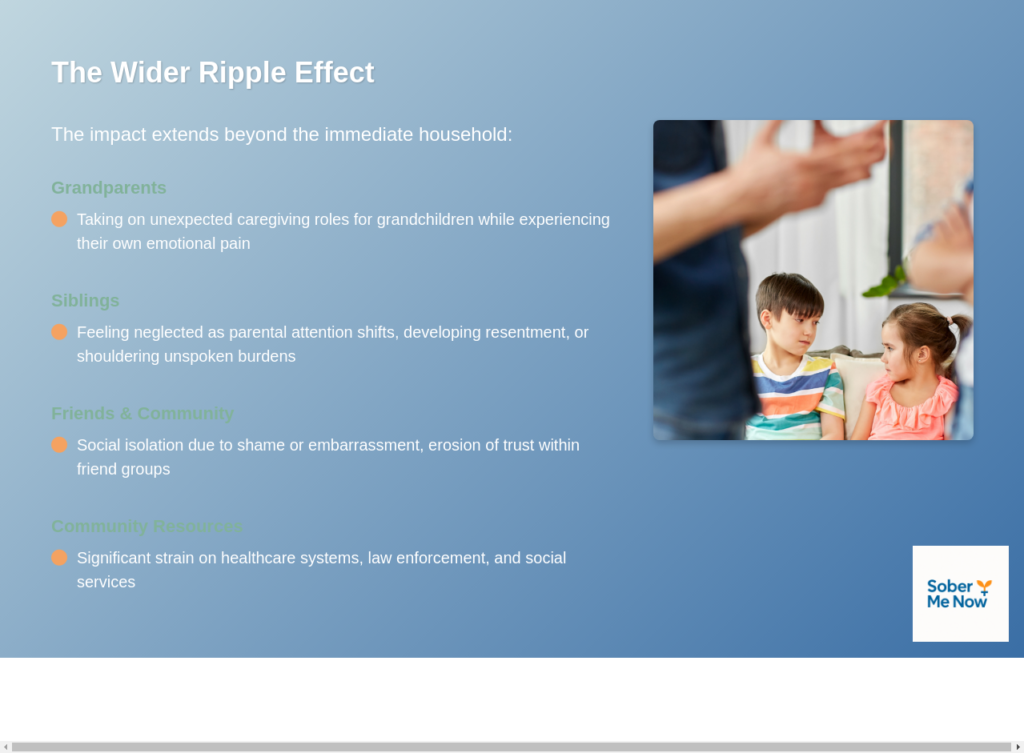
The ripples extend beyond the immediate household, affecting a wider circle of relatives and the community.
Grandparents
Grandparents often step into crucial, though often painful, roles:
- Caregiving Roles: They may find themselves taking on the primary caregiving responsibilities for their grandchildren, often unexpectedly and late in life.
- Emotional Pain: They experience immense emotional pain, watching both their child struggle with addiction and their grandchildren suffer the consequences.
- Financial Strain: Supporting an addicted child and now potentially their grandchildren adds significant financial strain.
Siblings of the Addict
Siblings also face unique challenges:
- Feelings of Neglect or Resentment: They may feel neglected as parental attention shifts to the struggling sibling, or resent the chaos and instability the addiction brings.
- Burden of Responsibility: They might feel an unspoken burden of responsibility for family well-being or even for their addicted sibling.
- Impact on Their Own Relationships: The stress and drama within the family can spill over, impacting their own personal relationships and ability to form healthy bonds.
Friends and Community
The broader social fabric is not immune:
- Social Isolation: Families affected by addiction may become socially isolated due to shame, embarrassment, or the unpredictable behavior of the addicted individual.
- Erosion of Trust: Within friend groups or smaller communities, trust can erode as promises are broken and negative behaviors escalate.
- Community Resources Strained: Addiction places a significant strain on community resources, including healthcare systems, law enforcement, and social services.
The Cycle of Dysfunction and Generational Impact
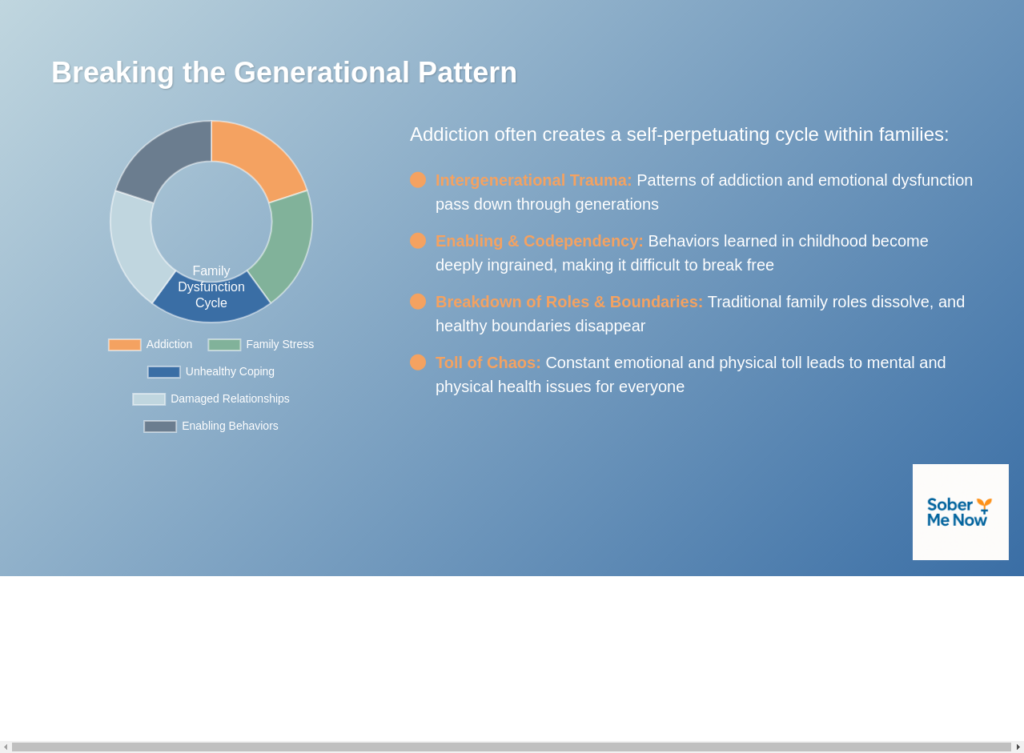
Addiction often creates a self-perpetuating cycle within families:
- Intergenerational Trauma: Without intervention, patterns of addiction and the emotional dysfunction it causes can be passed down from one generation to the next, creating a legacy of unresolved pain.
- Enabling and Codependency: These behaviors, often learned in childhood, can become deeply ingrained, making it difficult for family members to break free from the cycle of control and dependence.
- Breakdown of Roles and Boundaries: Traditional family roles dissolve, and healthy boundaries become nonexistent, leading to chaos and unpredictability.
- Toll of Chaos: The constant emotional and physical toll of living in such a chaotic and unpredictable environment wears down every family member, often leading to mental and physical health issues.
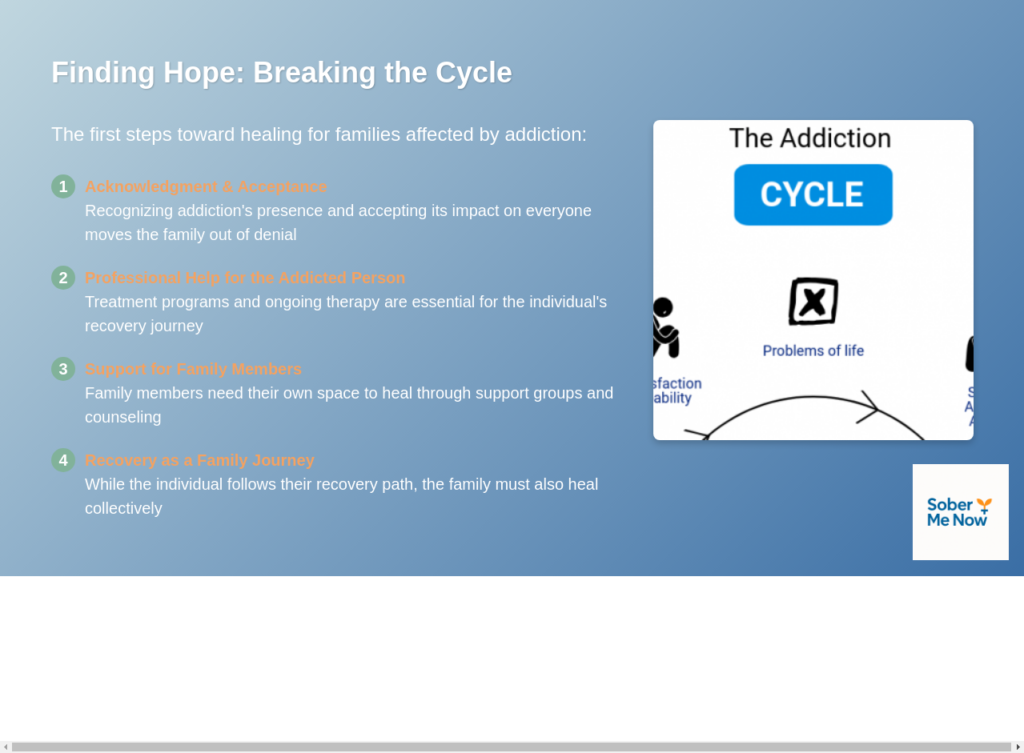
Breaking the Cycle and Finding Hope
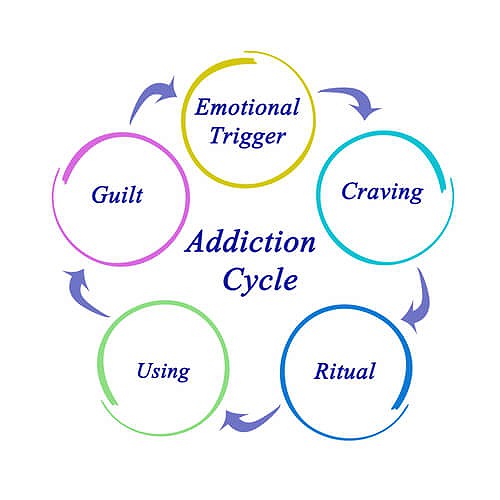
While the impact of addiction on families is profound, it is crucial to remember that recovery and healing are possible for the entire family system.
- Acknowledgment and Acceptance: The first, brave step is acknowledging that addiction is present and accepting that it impacts everyone. This moves the family out of denial and towards a path of healing.
- Seeking Professional Help for the Addict: This is paramount. Professional intervention, treatment programs, and ongoing therapy are essential for the individual to begin their recovery journey.
- Seeking Support for Family Members: This is equally vital. Family members need their own space to heal and learn coping mechanisms:
- Support Groups: Organizations like Al-Anon, Nar-Anon, and Families Anonymous provide invaluable peer support, understanding, and guidance.
- Family Therapy/Counseling: A skilled family therapist can help address communication issues, establish healthy boundaries, and heal old wounds within the family system.
- Individual Therapy: Individual therapy can help family members process their emotions, develop self-care strategies, and address any codependent tendencies.
- Setting Boundaries and Practicing Self-Care: Learning to set firm, consistent boundaries is crucial for protecting one’s own well-being. Practicing self-care is not selfish; it’s necessary for resilience.
- Recovery is a Family Journey: Emphasize that while the individual is on their own recovery path, the family must also embark on its own journey of healing, growth, and rebuilding trust.
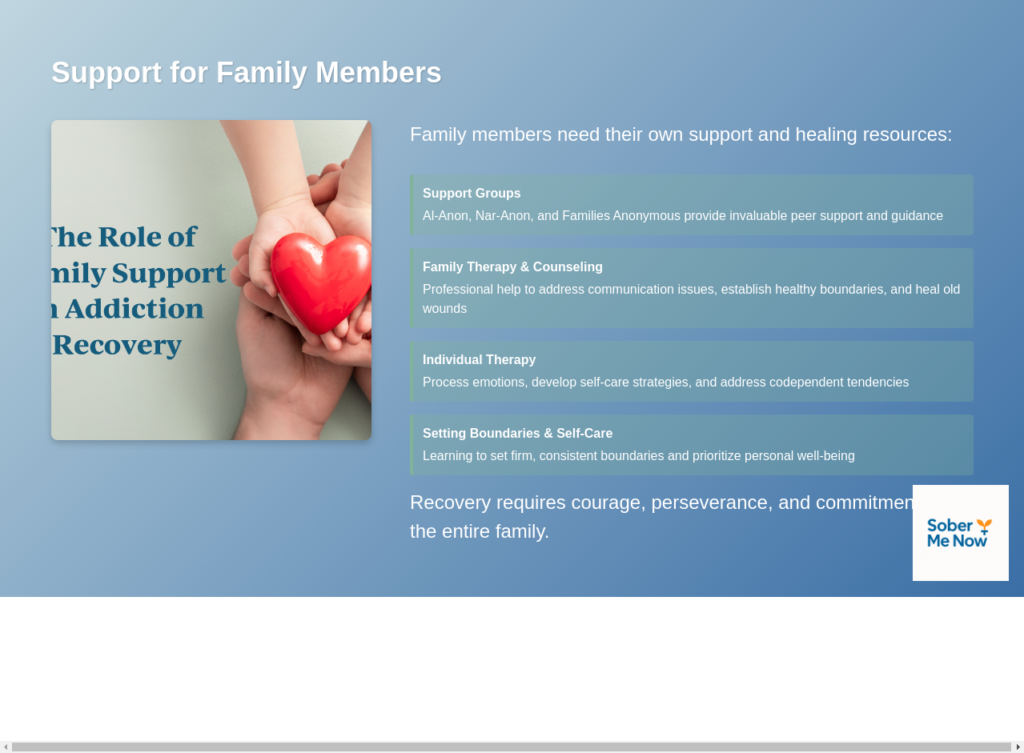
Conclusion
The impact of addiction reverberates far beyond the individual, creating a complex and often devastating ripple effect that touches every member of the family. From immediate partners and children to extended relatives and the wider community, no one remains untouched. However, acknowledging this profound impact is the first step towards healing.
While the challenges are immense, hope and healing are within reach. By seeking professional help for the addicted individual, and critically, by engaging in their own support and therapeutic processes, families can begin to break the cycle of dysfunction. Recovery is a journey that requires courage, perseverance, and a commitment from the entire family. With support, understanding, and a focus on healthy boundaries, families can emerge from the shadow of addiction and build a stronger, healthier future. If you or someone you know is struggling, please reach out for help; you don’t have to face this alone.
Featured Articles:
